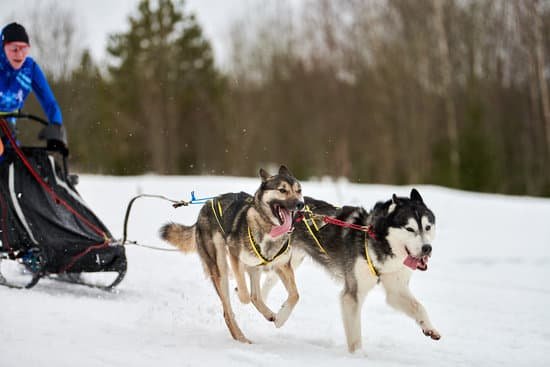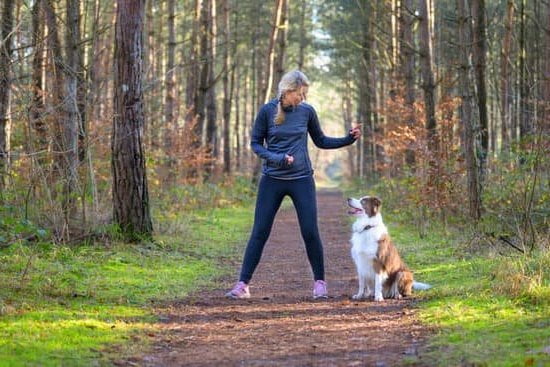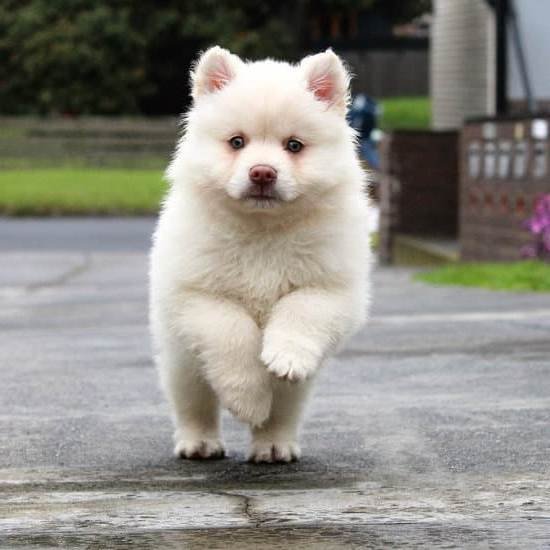Are you looking to engage in a fun and exciting outdoor activity with your furry friend? Learn how to train your dog to pull a scooter and enjoy the benefits of this unique form of exercise and bonding. Scooter dog training not only provides physical stimulation for your pup but also strengthens the bond between you and your canine companion.
Choosing the right breed for scooter pulling is crucial in ensuring a successful training experience. Different breeds have varying levels of energy, size, and strength, which can impact their ability to pull a scooter effectively. Preparing your dog physically for scooter pulling through exercises and conditioning will help prevent injuries and ensure that they are ready for the training process ahead.
In this comprehensive guide, we will discuss the necessary steps to successfully train your dog to pull a scooter. From basic commands and obedience training to gradually increasing distance and difficulty, each stage of the training process plays a vital role in building your dog’s skills and confidence. Stay tuned for expert tips on troubleshooting common issues, ensuring safety during training sessions, and advancing to more challenging skills as you progress in scooter dog training.
Choosing the Right Dog Breed for Scooter Pulling
When it comes to training your dog to pull a scooter, choosing the right breed is crucial. Not all dogs are suited for this type of activity, so it’s important to select a breed that has the necessary physical characteristics and temperament for scooter pulling. Some of the best dog breeds for pulling a scooter include Siberian Huskies, Alaskan Malamutes, Bernese Mountain Dogs, and Samoyeds. These breeds are known for their strength, endurance, and love for physical activities.
One key factor to consider when choosing a dog breed for scooter pulling is their size and build. Larger breeds with strong muscles and sturdy frames are usually better equipped for this type of work.
Additionally, breeds that have a high energy level and enjoy running are more likely to excel in scooter pulling activities. It’s also important to consider the climate in which you’ll be scootering, as some breeds may not do well in extreme heat or cold.
Before you start training your dog to pull a scooter, make sure to research different breeds and find one that aligns with your lifestyle and preferences. Consider factors such as exercise needs, grooming requirements, and compatibility with other pets or family members.
Remember that each dog is unique, so it’s essential to assess your individual dog’s capabilities and personality before embarking on scooter pulling training. With the right breed by your side, you’ll be on your way to enjoying this fun and rewarding activity together.
| Benefit | Information |
|---|---|
| Strength | Dogs with stronger muscles can excel at scooter pulling. |
| Temperament | Breeds with high energy levels are more likely to enjoy scooter pulling activities. |
Preparing Your Dog Physically for Scooter Pulling
Training your dog to pull a scooter can be a fun and rewarding activity for both you and your furry friend. However, before you embark on this exciting adventure, it is essential to ensure that your dog is physically prepared for the task at hand. Here are some steps you can take to get your dog in shape for scooter pulling:
- Consult with Your Vet: Before starting any new exercise regimen with your dog, it is always a good idea to consult with your veterinarian. They can assess your dog’s overall health and fitness level to determine if they are ready for scooter pulling.
- Build Muscle Strength: Scooter pulling requires a significant amount of muscle strength from your dog, particularly in their legs, back, and core. To help prepare them, incorporate exercises like uphill walking or running, swimming, or agility training into their routine.
In addition to physical conditioning, it is also crucial to pay attention to other aspects of your dog’s well-being during scooter pulling training:
- Proper Nutrition: Providing your dog with a balanced diet rich in quality proteins and nutrients can help support their muscle growth and energy levels needed for scooter pulling.
- Adequate Rest: Just like humans, dogs need proper rest to recover from physical activity. Ensure that your dog gets plenty of rest between training sessions to prevent fatigue and overexertion.
By following these tips and gradually increasing the intensity of your dog’s physical preparation for scooter pulling, you can help ensure that they are ready for the challenge ahead. Remember that every dog is different, so listen to their cues and adjust the training accordingly to keep them safe and healthy throughout the process.
Basic Commands and Obedience Training for Scooter Pulling
Training your dog to pull a scooter requires more than just physical preparation – it also involves ensuring that your furry companion understands and follows basic commands. Before hitting the road with your pup, it’s essential to lay down a solid foundation of obedience training. This not only makes the training process smoother but also enhances safety during scooter pulling activities.
One of the most important commands for scooter pulling is “stop” or “halt.” This command is crucial for maintaining control over your dog during the activity. Practice this command in various situations, such as while walking, playing, or when distractions are present. Consistent reinforcement and positive reinforcement will help reinforce this behavior in your dog.
Another essential command for scooter pulling is “leave it.” This command can prevent potential accidents by teaching your dog to ignore distractions like other animals, food scraps, or anything else they may encounter while pulling the scooter. Teaching this command early on can help avoid any mishaps during training sessions or actual outings. Remember to use rewards like treats, praise, or playtime to encourage your dog to obey these commands effectively.
In addition to these basic commands, ensure that your dog responds well to cues such as “go,” “slow down,” and “turn.” These cues are vital for directing your dog while riding a scooter together. Practice these commands in a controlled environment before introducing them during scooter pulling sessions. With consistent training and positive reinforcement, you can set the stage for a successful experience of training your dog to pull a scooter effectively and safely.
Introducing Your Dog to the Scooter
Before diving into the actual training of your dog to pull a scooter, it’s crucial to introduce them to this new equipment gradually. Desensitization is key in helping your furry friend feel comfortable around the scooter and familiarizing them with its presence. Here are some steps you can take to ensure a smooth introduction:
- Start by placing the scooter in an area where your dog spends time, allowing them to sniff and inspect it at their own pace.
- Reward positive behavior such as approaching the scooter willingly or showing curiosity towards it. Use treats or toys to reinforce this positive association.
- Once your dog seems comfortable with the scooter being stationary, gently roll it back and forth while rewarding any calm behavior they exhibit.
Familiarizing your dog with the scooter in a positive manner will lay the foundation for successful training sessions ahead. Remember, patience is key during this process as every dog may require different amounts of time to adjust.
Next, consider incorporating short walks alongside the scooter without any pulling involved. This will help your dog get accustomed to moving alongside the equipment before progressing to actual scooter pulling training sessions. Through consistent exposure and positive reinforcement, your pup will soon see the scooter as a fun tool for adventure rather than something intimidating.
- Stay attuned to your dog’s body language throughout this process and adjust accordingly based on their comfort level.
- Always maintain a calm and encouraging demeanor when introducing your dog to new experiences such as scooters.
- Remember that building trust and a strong bond with your furry companion is essential in successful scooter training.
Starting the Training Process
Setting the Foundation With Basic Commands
Before you begin training your dog to pull a scooter, it is essential to establish a strong foundation of basic commands and obedience training. Commands such as “sit,” “stay,” “heel,” and “come” are crucial for effective communication during scooter pulling sessions. Make sure your dog responds reliably to these commands before moving on to more advanced training.
Introducing Your Dog to the Equipment
Start by familiarizing your dog with the scooter and any gear that will be used during pulling sessions. Allow your dog to investigate the scooter while rewarding calm and positive behavior. Gradually introduce them to wearing a harness and attaching them to the scooter using a lightweight resistance leash. Use treats and praise to create positive associations with the equipment.
Beginning the Pulling Training
Once your dog is comfortable with the equipment, it’s time to start the actual pulling training. Begin in a low-distraction environment, such as an empty parking lot or quiet street. Start by walking beside your scooter with your dog attached, providing verbal cues and reinforcement as they move forward. Gradually increase speed while monitoring your dog’s comfort level and body language.
Training your dog to pull a scooter requires patience, consistency, and positive reinforcement techniques. By following this step-by-step guide and taking things slowly, you can help your canine companion develop the skills needed for safe and enjoyable scooter pulling adventures. Remember to always prioritize your dog’s well-being and safety throughout the training process. With dedication and practice, you’ll soon be enjoying thrilling rides with your furry friend by your side.
Troubleshooting Common Issues and Challenges During Training
Training your dog to pull a scooter can be a fun and rewarding experience for both you and your furry friend. However, like any training process, there may be some common issues and challenges that you encounter along the way. It’s important to address these challenges effectively to ensure a positive training experience for both you and your dog.
One common issue that dog owners may face when training their dogs to pull a scooter is distraction. Dogs are naturally curious animals, and they may become easily distracted by sounds, smells, or other animals while out on a scooter pulling session.
To address this challenge, it’s important to start training in a quiet and familiar environment before gradually introducing distractions. Practice basic commands such as “heel” and “focus” to help keep your dog focused on the task at hand.
Another common challenge during scooter pulling training is resistance or reluctance from your dog. Some dogs may initially resist pulling the scooter due to fear or uncertainty about the new equipment. To overcome this challenge, introduce the scooter gradually and use positive reinforcement techniques such as treats and praise to encourage your dog to take small steps towards pulling the scooter. Patience is key when dealing with resistance from your dog – remember that training takes time and consistency.
Lastly, some dogs may exhibit signs of fatigue or exhaustion during scooter pulling training sessions, especially if they are not physically prepared for the activity. It’s important to monitor your dog’s energy levels during training sessions and provide plenty of breaks and water breaks as needed.
Gradually build up endurance through regular practice sessions and adjust the distance or speed of the pulling activity based on your dog’s capabilities. By addressing these common issues and challenges with patience, consistency, and positive reinforcement, you can successfully train your dog to pull a scooter for an enjoyable bonding experience together.
Gradually Increasing Distance and Difficulty in Scooter Pulling Training
Training your dog to pull a scooter can be a fun and rewarding activity for both you and your furry companion. Once your dog has mastered the basics of scooter pulling, it’s time to gradually increase the distance and difficulty of the training sessions. This will help build your dog’s endurance, strength, and confidence in pulling the scooter effectively.
Setting Realistic Goals
Before you start increasing the distance or adding more challenges to the training, it’s important to set realistic goals for your dog. Consider your dog’s size, breed, age, and overall physical condition when planning the progression of scooter pulling training. Incremental increases in distance or difficulty will prevent injury and ensure that your dog continues to enjoy the training process.
Gradual Progression
When increasing the distance that your dog pulls the scooter, start by making small increments each session. For example, if your dog is comfortable pulling the scooter for one mile, gradually increase it to 1.5 miles in the next session. This gradual progression allows your dog’s muscles to adapt and strengthen without straining them. Be observant of your dog’s body language during training sessions to ensure they are not overexerted.
Adding Challenges
In addition to increasing distance, consider adding challenges to make scooter pulling more engaging for your dog. You can introduce obstacles such as cones or agility hurdles along the route for your dog to navigate while pulling the scooter. This not only adds mental stimulation but also helps improve coordination and focus. Remember to reward your dog with praise and treats for successfully completing these challenges.
By gradually increasing distance and difficulty in scooter pulling training, you’ll help build a strong bond with your dog while enjoying a fun outdoor activity together. Be patient, consistent, and always prioritize safety during training sessions to ensure a positive experience for both you and your canine companion. With dedication and proper guidance, you’ll soon have a well-trained pup ready to hit the trails with their scooter-pulling skills.
Safety Tips and Gear Recommendations for Scooter Dog Training
Training your dog to pull a scooter can be a fun and rewarding experience for both you and your furry friend. However, safety should always be a top priority when engaging in this activity. Here are some important safety tips and gear recommendations to consider before you hit the road with your scooter and pooch.
First and foremost, make sure to invest in a quality harness specifically designed for scooter pulling. A properly fitting harness is essential to ensure your dog’s comfort and safety while pulling the scooter. Avoid using neck collars or any equipment that puts pressure on your dog’s throat, as this can cause injury and discomfort during the activity.
Additionally, it is crucial to outfit yourself with safety gear such as a helmet, knee pads, and elbow pads. Accidents can happen unexpectedly, so it is important to protect yourself from potential falls or collisions while riding the scooter alongside your dog. Consider wearing bright colored clothing or reflective gear to increase visibility, especially if you plan on training during early morning or evening hours.
Lastly, always start training in a safe environment free of distractions or hazards. Choose a flat, smooth surface without traffic where you can focus on building the foundational skills of scooter pulling with your dog. Gradually introduce new elements such as inclines or obstacles once you feel confident in your dog’s abilities. Remember to monitor your dog’s behavior closely throughout the training process and adjust accordingly to ensure a safe and enjoyable experience for both of you.
Advanced Skills
In conclusion, training your dog to pull a scooter can be a rewarding experience for both you and your furry companion. It not only provides physical exercise for your dog but also strengthens the bond between you two. By following the steps outlined in this guide, you can effectively teach your dog how to pull a scooter with skill and confidence.
As you progress through the training process, it is important to keep in mind the importance of building endurance and speed in scooter pulling. Consistent practice and gradual increase in distance and difficulty will help your dog develop the necessary strength and stamina to excel in this activity. Remember to always be patient and encouraging during training sessions to ensure a positive learning experience for your dog.
Additionally, prioritizing safety by using proper gear such as a well-fitted harness, scooter attachment, and reflective clothing is crucial when engaging in scooter pulling activities with your dog. Always be aware of your surroundings and take necessary precautions to prevent any accidents or injuries. With dedication, patience, and proper guidance, you can successfully train your dog to pull a scooter with confidence and enjoy countless adventures together.
Frequently Asked Questions
Can a Dog Pull a Scooter?
Yes, a dog can pull a scooter with proper training and guidance. It is essential to start with basic commands like “go,” “stop,” and “turn” to ensure safety for both the dog and the rider.
How Do I Teach My Dog to Pull a Bike?
Teaching a dog to pull a bike requires patience and consistency. Start by getting your dog comfortable wearing a harness or pulling equipment. Then, practice walking together before gradually introducing the bike. Use positive reinforcement techniques to encourage good behavior.
How Do I Teach My Dog to Pull Things?
To teach your dog to pull things, start by introducing them to the concept of pulling using a lightweight object like a toy. Once they understand the idea, gradually increase the weight and size of the objects they pull. Use rewards and praise to reinforce this behavior positively.

Welcome to the blog! I am a professional dog trainer and have been working with dogs for many years. In this blog, I will be discussing various topics related to dog training, including tips, tricks, and advice. I hope you find this information helpful and informative. Thanks for reading!





